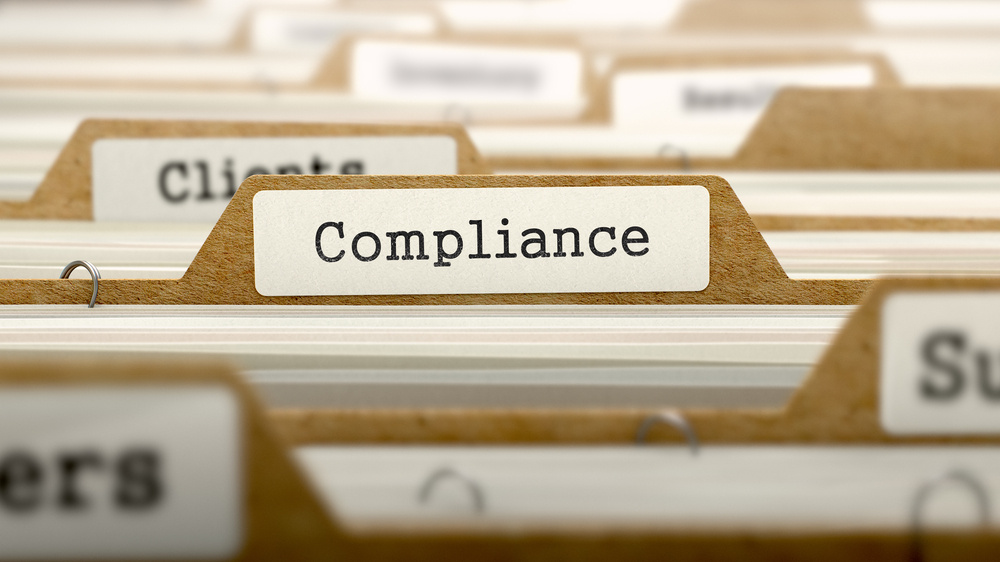Ensuring Robust Security for Sensitive Government Data
Table of contents
In the face of rising cyber threats, government agencies must handle sensitive data with heightened vigilance. Protecting public records, personal information, and confidential government documents isn’t just about compliance; it’s a matter of public trust. Yet, agencies frequently manage vast volumes of documents, making it challenging to maintain secure and accessible records without reliable digital solutions.
Document scanning offers an essential strategy for agencies looking to secure sensitive data more effectively. By digitizing records with advanced security features, agencies can limit unauthorized access, protect data integrity, and create more efficient workflows that align with modern privacy standards.
The High Stakes of Government Data Security
Government agencies hold some of the most sensitive information in the public sector, from citizen records to confidential administrative documents. With cyberattacks on the rise, agencies must take proactive steps to protect these assets. Unlike private companies, government bodies are bound by strict data protection laws, making compliance both a legal obligation and a matter of maintaining public trust.
Security and Privacy Challenges in Government
Sensitive government data often comes under targeted attacks by cybercriminals aiming to exploit system vulnerabilities. From phishing schemes to ransomware attacks, each successful breach not only disrupts daily operations but also risks exposing sensitive information to the public or malicious entities. For government agencies, these breaches can result in:
- Public Trust Erosion: Breaches erode public confidence, as citizens rely on government bodies to protect their personal information and maintain transparency.
- Compliance Failures: Noncompliance with data protection standards like CJIS for criminal justice information or HIPAA for healthcare data can lead to fines, operational disruptions, and reputational damage.
- Operational Setbacks: Recovering from a data breach consumes time, labor, and financial resources, which detracts from an agency’s primary objectives.
Digital document scanning addresses these security risks, creating a digital environment that not only strengthens data security but also streamlines workflows to support compliance and transparency.
Key Security Features of Document Scanning for Government Agencies
For government agencies, document scanning solutions must offer robust security features to ensure that sensitive data remains protected throughout its lifecycle. The following are critical components to look for in any secure document scanning system:
Secure Data Encryption: Protection In Transit and At Rest
Data encryption is one of the most effective ways to prevent unauthorized access. With encryption protocols applied both during transmission and while data is stored, agencies can secure information against potential interception or unauthorized retrieval. When choosing a scanning solution, CIOs and IT managers should ensure that the system encrypts data at every stage, from initial scanning to storage on servers or the cloud.
User Access Controls and Permissions
Controlling who can access sensitive data is vital for government compliance and security. A comprehensive document scanning solution allows for detailed user permissions, ensuring that only authorized personnel have access to particular files or folders. This feature not only prevents unauthorized viewing or downloading but also limits the risk of internal data misuse—a crucial step for protecting confidential documents.
Audit Trails for Transparency and Accountability
Audit trails are an indispensable tool for tracking how and when data is accessed, modified, or shared. This visibility is essential for regulatory compliance and can support investigations if data misuse or breaches occur. By providing clear records of user activity, audit trails reinforce accountability and foster a secure data environment within government agencies.
Data Backup and Recovery Options
Given the risks of cyberattacks, natural disasters, and even accidental deletions, data backup and recovery are vital to any secure document management strategy. Agencies should look for solutions that support automatic, regular backups and have reliable recovery options. By safeguarding data availability, these solutions help ensure continuity in government operations, even under adverse circumstances.
For more details on how document scanning enhances efficiency and security in government operations, explore Efficiency in Government: How Document Scanning Helps.
Addressing Common Challenges and Objections
Implementing new technologies in government agencies often involves overcoming various barriers, from bureaucratic resistance to budget limitations. By addressing these common concerns, document scanning solutions can be better positioned as a secure, cost-effective option for handling sensitive government data.
Overcoming Reluctance to Change
Bureaucratic structures within government agencies may resist changes to established processes. Introducing a new document scanning solution may seem complex and risky, particularly in environments where technology updates are rare. To counter these concerns, agencies can benefit from choosing user-friendly scanning solutions that offer smooth integrations with existing systems and workflows. Clear training programs and support services also ease the transition, enabling employees to feel confident in using the new technology and recognizing its security benefits.
Working Within Budget Constraints
Government agencies often face tight budgets, making it essential to justify new investments. Although implementing a document scanning solution may involve initial costs, it can deliver long-term savings. Digital scanning reduces or eliminates expenses associated with physical storage, paper, and printing. Additionally, streamlined workflows can enhance productivity, allowing employees to allocate time to higher-value tasks rather than manual data handling. By investing in digital scanning, agencies can cut costs in the long run and increase efficiency—a win-win for budgets and performance.
Ensuring Compliance with Government Regulations
Government agencies must comply with various data security regulations, including standards like HIPAA, CJIS, and others specific to different sectors. Many digital document scanning solutions are designed to support compliance by offering built-in security features, such as encryption, access control, and audit trails. This compliance-focused approach helps agencies meet regulatory standards, minimizing the risk of fines and reinforcing public trust.
For more information on the compliance benefits of document scanning, you may also explore government Document Scanning for in-depth resources and guidance.
Document Scanning as a Catalyst for Government Modernization
Document scanning goes beyond securing data; it serves as a crucial step toward digital transformation within government agencies. By replacing outdated paper-based processes with digital systems, agencies can create a more modern, efficient approach to managing public records.
Enabling Digital Transformation and Improved Efficiency
Document scanning streamlines workflows by digitizing large volumes of paper documents, making them searchable, accessible, and easier to manage. This transition allows for faster retrieval and processing of information, significantly reducing the time employees spend on manual file handling. Digitized records enhance productivity and make it easier to fulfill information requests, a benefit that can also improve public satisfaction.
Enhancing Accuracy and Reducing Errors
Manual data entry and paper management are inherently prone to errors that can lead to misplaced records, duplication, or incorrect entries. Scanning and digital indexing can help eliminate these issues, ensuring that records are accurately stored and easily accessible. Enhanced accuracy not only improves operational efficiency but also contributes to compliance with government standards, which often require precise data handling.
Increasing Accessibility and Transparency
Digital records can be securely accessed and shared across authorized departments, facilitating collaboration while maintaining data security. Additionally, document scanning can improve transparency by making it easier to retrieve public records and respond to Freedom of Information Act (FOIA) requests. This transparency reinforces trust and accountability, both essential for public-facing government agencies.
For more insights on document scanning’s role in government efficiency, see our guide on Efficiency in Government: How Document Scanning Helps.
Practical Steps for Implementing Secure Document Scanning Solutions
Implementing a document scanning solution can seem daunting, especially in large government settings with complex infrastructure and regulatory requirements. A structured approach to integrating these solutions can make the process more manageable, ensuring a seamless transition to a secure digital environment.
Step 1: Define Security and Compliance Requirements
Before selecting a document scanning solution, identify the specific security and compliance standards that your agency must meet. This might include regulations like HIPAA, CJIS, or other federal and state guidelines. Clarifying these requirements early on helps ensure that any solution chosen aligns with your agency’s regulatory obligations.
Step 2: Evaluate and Select a Secure Scanning Solution
When evaluating document scanning vendors, prioritize security features like data encryption, user access controls, and audit trails. Look for providers who specialize in government compliance to support adherence to strict data security standards. Additionally, consider solutions that offer seamless integration with existing software systems to ensure compatibility and minimize disruption.
Step 3: Train Staff and Implement Access Controls
Training employees is crucial for a successful rollout. Offer comprehensive training on the new system’s features, particularly those related to security and compliance, so staff can handle documents confidently and correctly. Implement access controls based on staff roles, ensuring that only authorized personnel can view or modify sensitive data.
Step 4: Establish Regular Backups and Recovery Protocols
Data backup and recovery protocols are essential for maintaining access to critical information, even in the event of a cyberattack or natural disaster. Set up regular, automated backups and test recovery procedures periodically. A reliable backup and recovery plan ensures that important records remain accessible and secure under any circumstances.
Step 5: Monitor and Audit System Activity
After implementing the scanning solution, monitoring system activity helps detect any unusual access or modifications. Utilize audit trail features to track user actions and review them regularly to maintain accountability. This proactive approach helps identify potential security risks early and reinforces a secure environment for sensitive government data.
For more on secure scanning for government needs, visit Government Document Scanning to explore additional resources.
Conclusion
Securing sensitive government data is a top priority for agencies aiming to protect public trust and ensure compliance with stringent regulations. Document scanning offers a powerful solution by enhancing data security, increasing efficiency, and supporting digital transformation in government operations. By implementing a secure scanning system, agencies can better manage records, streamline workflows, and maintain the transparency and accountability citizens expect.
To modernize and protect your agency’s data, consider DocCapture’s secure document scanning solutions. Fill out our “get a quote” form to explore how our solutions can support your data protection and modernization goals effectively.
Share this
You May Also Like
These Related Stories

Enhancing Data Security in Government with Document Scanning

Navigating Data Security in Government Document Management

